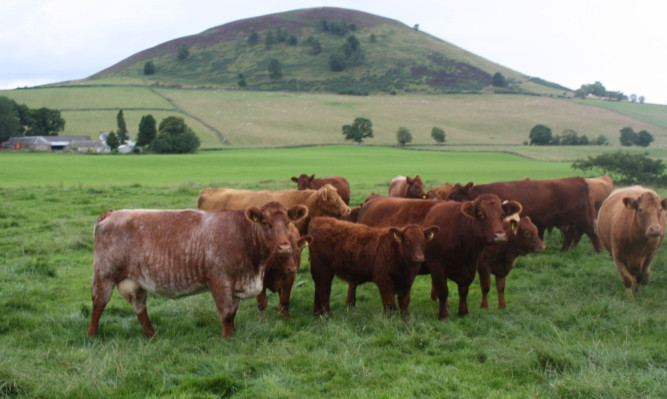Most cattle and sheep businesses saw an improvement in their margins during 2013 despite the exceptionally difficult spring weather, according to Quality Meat Scotland’s latest enterprise costings report.
Cattle and Sheep Enterprise Profitability in Scotland 2014 summarises the results of a survey of Scottish beef and sheep producers during the 2013 calf and lamb crop year.
“The very challenging weather of spring 2013 impacted heavily on mortality during hill sheep and suckler herds’ lambing and calving and resulted in considerable feed and forage expense for all herds and flocks,” said Stuart Ashworth, QMS head of economics Services.
The legacy of the 2012 wet weather conditions also resulted in additional veterinary costs for some during 2013.
“However, market prices for all classes of stock covered by the survey did increase substantially during 2013,” Mr Ashworth said.
Looking at suckler herd performance, the survey results highlight how difficult it is to achieve a positive margin from the marketplace.
One-third of the suckler herds surveyed reported a positive net margin from which to pay family labour and reward the risk capital invested in the business an improvement from 22% last year.
The survey excludes Single Farm Payment on the grounds it would be made regardless of whether there was livestock on the farm or not. The income from the Beef Calf Scheme is included because it is coupled to production.
“Margins were maintained more easily among store cattle finishers where 72% of businesses surveyed achieved a positive net margin, up from 59% last year. Nevertheless, those finishing long keep store cattle were the one category that saw a decline in margins in 2013,” said Mr Ashworth.
Looking at hill sheep businesses, the difficult weather in early 2013 resulted in a general deterioration in hill ewe margins, with only 10% of hill flocks returning a positive margin, down from 19% last year and 57% two years ago.
Just over three quarters of the store lamb finishers achieved a positive net margin compared to 50% last year. However those businesses reporting positive net margins still struggled to deliver a fair return for labour and capital.
There were signs of a significant increase in producers’ drive to improve technical knowledge and the application of science.
The results continue to show significant variation in levels of financial and technical performance within the industry.
Top producers continue to be characterised by high physical, or technical, performance; Strong control over costs and maximising returns from the market place.
“Those running suckler herds in the top third of gross margin per animal achieved higher output through higher calf rearing percentages, generally selling heavier calves resulting in higher yield per cow in the herd. They also typically received 6-10ppk liveweight more for the calves they sold,” he said.
Suckler herds in the top third of financial performance were also characterised by strong variable cost control.
With the exception of lowground sucklers, those in the top third had lower total variable costs than the average while achieving higher output.
In all cases variable costs per kg of calf reared were lower among the top third. Fixed costs were also firmly controlled, in all cases top third producers had lower fixed costs per kg of output even if on occasion fixed cost per cow was higher than the average.
“Those in the top-third of sheep producers similarly achieved higher outputs through higher stock performance. Typically they reared about 12-22 more lambs per 100 ewes than the average,” said Mr Ashworth.
Although they did not necessarily rear lambs to the heaviest weights, the larger lamb crop typically resulted in top third flocks selling 7-13kg lwt more lamb per ewe.
They also typically sold the highest proportion of lambs for immediate slaughter. The net effect being that income per ewe from lamb sales was £20-30 per ewe more than the average.
